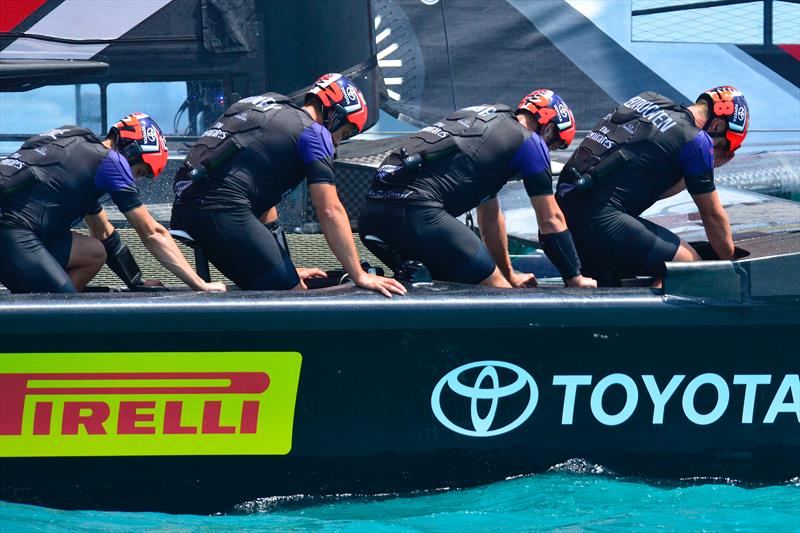
Cyborgs and Cyclors sidelined for America’s Cup
by Suzanne McFadden 10 Apr 2018 13:50 PDT
11 April 2018

Cyclors and Cyborgs won't feature in the 36th America's Cup © Scott Stallard
There’s a curious clause in the new class rule for the AC75 boat to be sailed in the next America’s Cup. It reads: “There shall be eleven crew members, unless reduced by accident, who shall all be human beings."
Emirates Team New Zealand’s technical director, Dan Bernasconi, chuckles at its mention. “It’s a little bit tongue-in-cheek”, he says.
“But you never know. People are always looking for the last bit of performance to get out of the boat. Whether anyone would turn up with a crew full of androids, who would know?” he says.
From a team that came up with “cyclors” in the last Cup, they certainly didn't think it would be so out-of-this-world for someone to invent cyborgs for the next.
Those are the kind of outside-the-square notions that Team NZ has had to think of when devising the document that defines how the new foiling monohull is built, and who will sail it, in the 2021 America’s Cup.
It took a global team four painstaking months to come up with the constraints around the AC75 yacht. They literally worked around the clock: when Bernasconi’s team tagged out in Auckland around 9pm each night, Luna Rossa’s designers in Italy tagged in, doing their bit to help create the rule.
Although it’s clearly a sporting event driven by technology, Bernasconi says they’ve tried to put more weight back onto human skills required to sail the boat.
“We’re really keen to make sure it stays a sailing sport and that the boats aren’t all driven by computers. So we’ve actually pulled back quite a bit on this rule, and put in a lot of constraints to make sure you aren’t allowed any kind of autopilot,” he says.
In the last Cup, he says, most teams would have experimented with autopilots to self-steer the catamarans. “It wasn’t permitted in the rules, but it was a good way to learn how you may be able to sail the boat optimally,” he says.
Cyclors, like robots, are forbidden in this edition of the Cup. There’s a rule ensuring that the jib is controlled with conventional winches powered by hands, not hydraulics.
“We wanted a bit more of a connection to the kind of sailing that most sailors in the sport are involved with,” Bernasconi says.
Artificial Intelligence will, however, play a vital role in Team NZ’s defence bid.
In the 2017 America Cup campaign, the Kiwis placed “huge value” on simulation, sailing the boat virtually on a huge computer screen without it touching the water. British-born Bernasconi brought the idea from his six-year career working as a vehicle dynamics engineer with the McLaren Formula One Racing team.
“Yes it’s good to get the boat out on the water, but the bulk of our design is done through simulation and optimising on a virtual boat, rather than in reality,” he says.
The daggerboards take so long to build, and you’re limited in your resources, that you can’t afford to go through a huge number of iterations of real parts, some of which work and some that don’t.
“The other great thing about it, is that it gets the sailors involved in the design process. Most of the designers here aren’t that good at driving the simulator. So you get the sailors involved right from the beginning, and then they understand the trade-offs of foil shapes and section shapes much better. And I think that leads to a much better boat.”
In the last Cup, Bernasconi would have three sailors on the sailing simulator. Helmsman Peter Burling would be holding a real steering wheel in front of a huge screen, with Blair Tuke manoeuvring the controls for the foils, and skipper Glenn Ashby moving the wing with an X-box controller – a gadget that transferred to the real boat and became known as Team NZ’s ‘secret weapon’.
For the full story click here